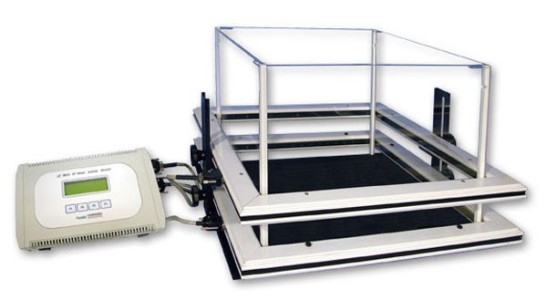Authors
R. Lalonde, C. Strazielle.
Lab
Centre Hospitalier de l’Université de Montréal/St-Luc, Unité de Recherche en Sciences Neurologiques, Montréal, Québec, Canada ; Université de Rouen, Faculté des Sciences, Mont-Saint-Aignan, France ; Université Henri Poincaré, Laboratoire de Pathologie Mol
Journal
Archives of Gerontology and Geriatrics
Abstract
Aged mice were compared to middle-aged mice in two tests of exploratory activity and two tests of motor coordination. The 16-month-old mice had more ambulatory and rearing movements than 24-month-old mice, but fewer sterotyped movements. In contrast, no difference was found in the emergence test. The 16-month-old group outperformed the 24-month-old group on the stationary beam and coat-hanger tests. Regression analyses indicate that the number of falls from the stationary beam was positively correlated with movement times (MTs) before reaching the end of the horizontal bar. However, there was no significant correlation between open-field measures and emergence latencies, indicating that the two tests of exploratory activity estimate separate aspects of behavior.
BIOSEB Instruments Used
Infrared Actimeter (LE8815)
Source :
http://www.sciencedirect.com/science/article/pii/S0167494308000897

 Pain - Thermal Allodynia / Hyperalgesia
Pain - Thermal Allodynia / Hyperalgesia Pain - Spontaneous Pain - Postural Deficit
Pain - Spontaneous Pain - Postural Deficit Pain - Mechanical Allodynia / Hyperalgesia
Pain - Mechanical Allodynia / Hyperalgesia Learning/Memory - Attention - Addiction
Learning/Memory - Attention - Addiction Physiology & Respiratory Research
Physiology & Respiratory Research











![Dynamic Weight Bearing 2.0 – Postural Module [Add-on]](https://bioseb.com/733-home_default/dynamic-weight-bearing-20-add-on-postural-module.jpg)
























 Pain
Pain Central Nervous System (CNS)
Central Nervous System (CNS) Neurodegeneration
Neurodegeneration Sensory system
Sensory system Motor control
Motor control Mood Disorders
Mood Disorders Other disorders
Other disorders Muscular system
Muscular system Joints
Joints Metabolism
Metabolism Cross-disciplinary subjects
Cross-disciplinary subjects CONFERENCES & MEETINGS
CONFERENCES & MEETINGS 